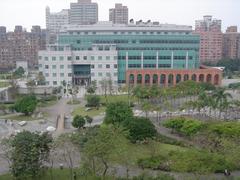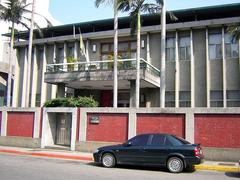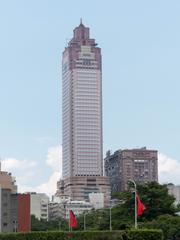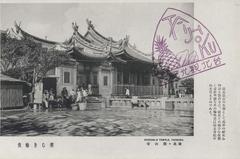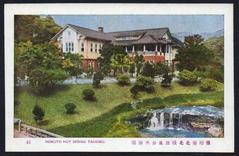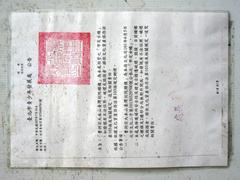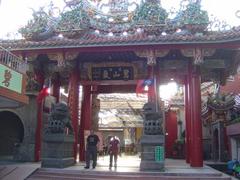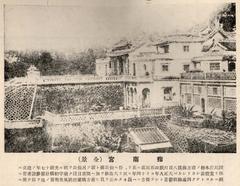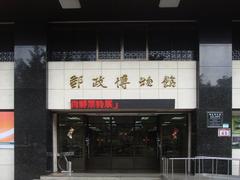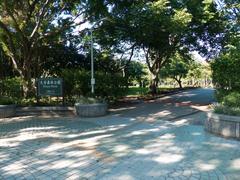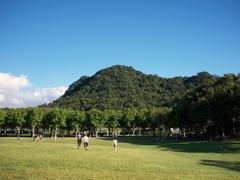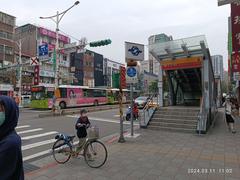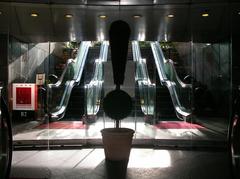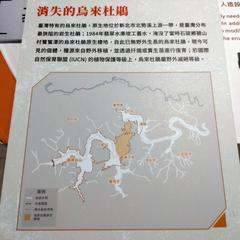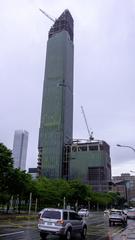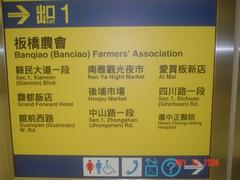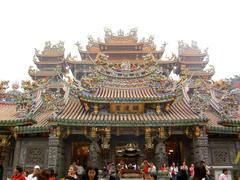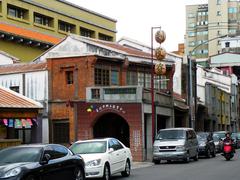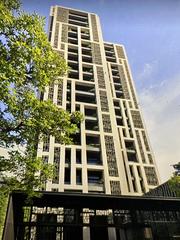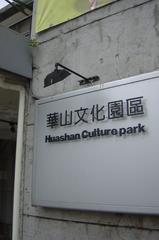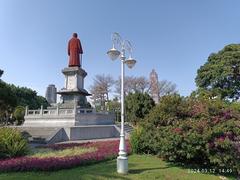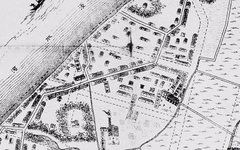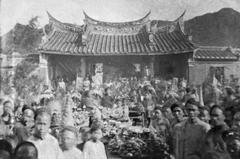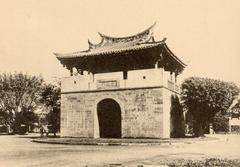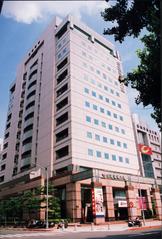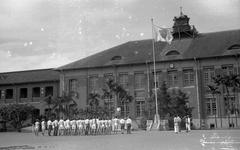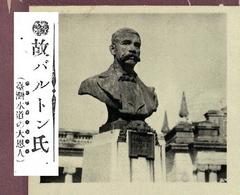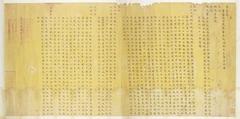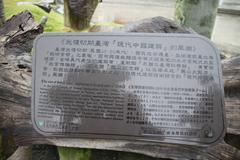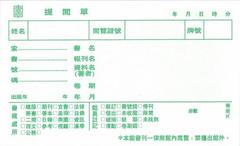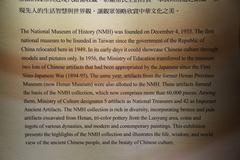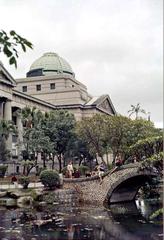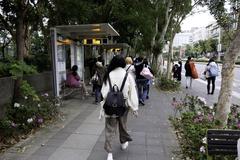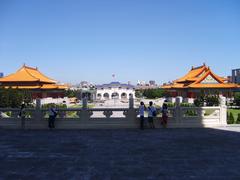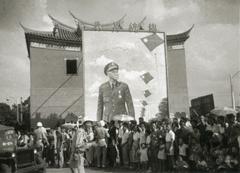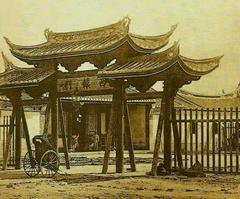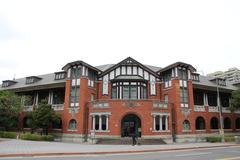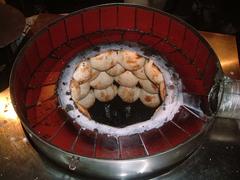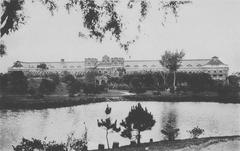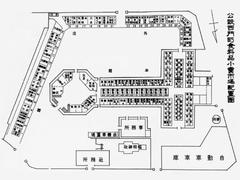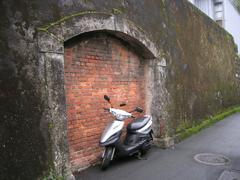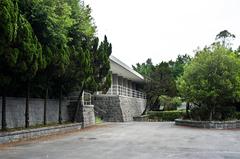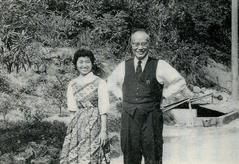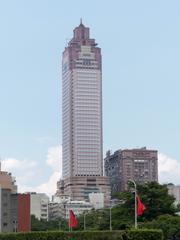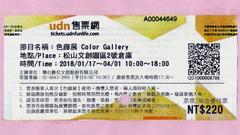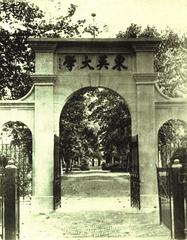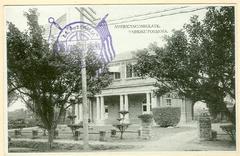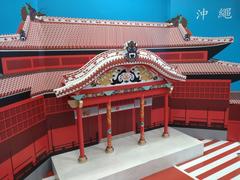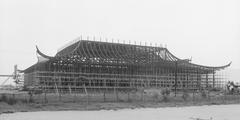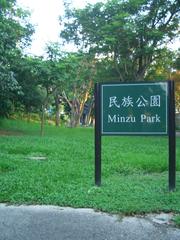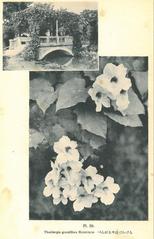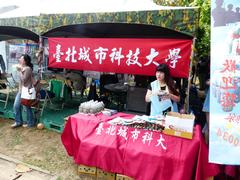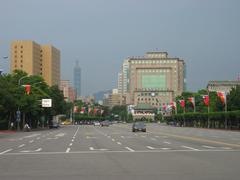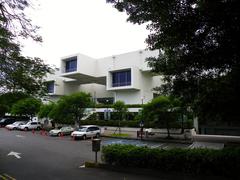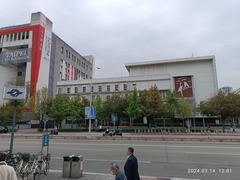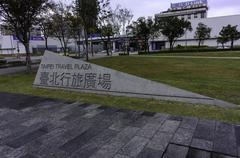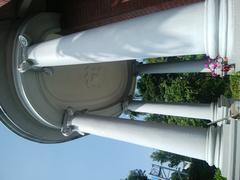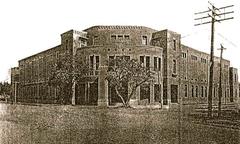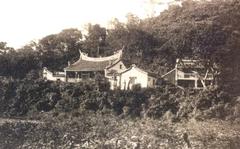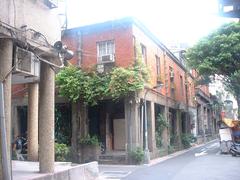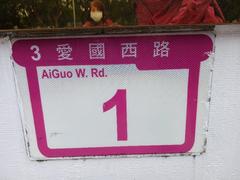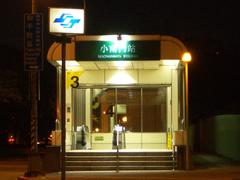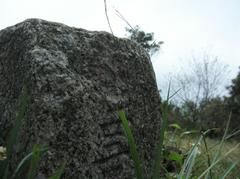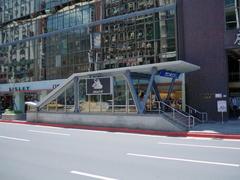Lady Zhou Memorial Gate Taipei: Visiting Hours, Tickets, and Historical Sites Guide
Date: 15/06/2025
Introduction
Lady Zhou’s Memorial Gate (周氏節孝坊) is a distinguished historical landmark situated in Taipei’s Wanhua District, one of the city’s oldest neighborhoods. Erected in 1850 during the Qing Dynasty, this traditional Chinese paifang (memorial archway) honors Lady Zhou, a paragon of chastity and filial piety who, after her husband’s untimely death, raised her children and cared for her in-laws. The gate exemplifies exquisite Qing-era stone craftsmanship and embodies the Confucian values that deeply influenced Taiwanese society. Today, Lady Zhou’s Memorial Gate offers visitors a glimpse into Taiwan’s cultural heritage and the evolving role of women in society, making it a compelling destination for travelers and history enthusiasts (Taiwan Tourism Administration, Taipei City Government).
Table of Contents
- Origins and Construction
- Architectural Features
- Historical Context and Cultural Significance
- Visiting Lady Zhou’s Memorial Gate
- Preservation and Restoration
- Role in Modern Taipei
- Educational and Community Impact
- Architectural Details and Restoration Techniques
- Nearby Attractions
- Events and Festivals
- Frequently Asked Questions (FAQ)
- Summary & Call to Action
- References
Origins and Construction
Lady Zhou’s Memorial Gate was built in 1850 (some sources cite 1861) under the Qing Dynasty as a community tribute to Lady Zhou, whose life was an embodiment of Confucian ideals. Memorial gates like this, known as “paifang” (牌坊), were often commissioned by the local community and recognized by the imperial government to honor individuals—especially women—who displayed exceptional virtue (Taiwan Tourism Administration). The gate’s creation was both a personal honor and a public declaration of the core values that underpinned society at the time.
Architectural Features
Structure and Design
The gate is constructed from durable stone, primarily quarried from Mount Guanyin in New Taipei, prized for its fine grain and suitability for intricate carvings. Its tripartite layout features a central, wider passage flanked by two narrower side passages, supported by four robust columns. The gate is organized into three vertical tiers, each adorned with distinct decorative and structural features (Taipei City Government).
Decorative Elements
- Carvings: The gate is embellished with motifs of dragons, phoenixes, clouds, and peonies—symbols of virtue, longevity, prosperity, and honor.
- Inscriptions: Classical Chinese inscriptions extol Lady Zhou’s virtues and document the gate’s origins.
- Roof and Eaves: Although made entirely of stone, the structure mimics wooden paifang with stylized eaves and upturned corners believed to ward off evil.
- Columns and Capitals: Columns rest on sturdy bases and are crowned with lotus or cloud motifs for both symbolism and structural integrity.
Historical Context and Cultural Significance
Confucian Values in Taiwan
In the 19th century, Taiwan’s Han Chinese communities adhered to Confucian ethics, particularly the “Three Obediences and Four Virtues” (三從四德) expected of women. Memorial arches like Lady Zhou’s were public affirmations of these values, reinforcing social order and serving as moral exemplars within the community (EveryCulture.com). The gate’s location near Longshan Temple and Bopiliao Historic Block highlights Wanhua’s significance as a center of traditional culture (Chloe’s Travelogue).
Gender, Memory, and Changing Perspectives
While originally intended to promote female chastity and loyalty, Lady Zhou’s Memorial Gate today also prompts reflection on the evolution of gender roles in Taiwanese society. Modern visitors often consider the tension between traditional values and contemporary gender equality, making the site a focus for both historical appreciation and sociocultural dialogue (Taipei City Government).
Visiting Lady Zhou’s Memorial Gate
Visiting Hours & Tickets
- Wanhua (Traditional Site): Open daily, 9:00 AM – 5:00 PM.
- Beitou (Ancestral Home Memorial): Open daily, 8:00 AM – 6:00 PM (Trip.com).
- Admission: Free of charge at both sites.
Accessibility
The memorial gate is wheelchair accessible, with paved walkways and ramps. Interpretive signage is available in Mandarin and English.
Location & Directions
-
Wanhua Site:
- By MRT: Take the Blue Line to Longshan Temple Station, Exit 1, then walk 5 minutes south.
- By Bus: Multiple routes serve stops near Zhonghua Road and Kangding Road.
-
Beitou Site:
- By MRT: Walk north from Beitou Station on the Taipei Metro.
Travel Tips
- Combine your visit with nearby attractions such as Longshan Temple, Bopiliao Historic Block, and Herb Alley for a richer cultural experience.
- Early morning visits are recommended for a tranquil atmosphere.
- Wear comfortable shoes, as the area is best explored on foot.
- Check local calendars for special events or guided tours.
Visitor Facilities
- On-site interpretive signage (Mandarin & English)
- Occasional guided tours available through local operators or the Beitou Tourism Office.
Preservation and Restoration
Lady Zhou’s Memorial Gate has survived natural disasters and urban development, including significant damage during the 1897 earthquake. Restoration in 1992 used matching stone from Mount Guanyin and modern reinforcement techniques, ensuring the gate’s longevity while preserving its original artistry (Department of Cultural Affairs). The site is protected as a municipal historic monument, with regular maintenance and oversight by heritage organizations.
Role in Modern Taipei
The gate is a focal point for cultural education, heritage tours, and community celebrations. It is included in local festivals, such as the Xiahai City God’s Birthday parade, and serves as an anchor for educational activities that explore traditional values, architecture, and societal change (Taiwan Obsessed). Community engagement initiatives, including art installations and public forums, ensure the site remains relevant and dynamic.
Educational and Community Impact
Beyond its historical significance, Lady Zhou’s Memorial Gate is a living classroom for understanding the intersection of gender, memory, and power in Taiwanese society. Schools and community groups use the site to foster discussions on heritage, identity, and social transformation. The gate’s symbolism and preserved architecture continue to inspire pride and reflection among locals and visitors alike.
Architectural Details and Restoration Techniques
- Materials: Guanyin Mountain stone, selected for durability and carving potential (Taipei City Government).
- Dimensions: Tripartite design with a broader central passage, three vertical tiers, and four supporting columns.
- Decorative Motifs: Dragons, phoenixes, peonies, clouds, and bats—all with auspicious meanings.
- Restoration: 1992 project ensured authenticity by sourcing stone from the original quarry and employing seismic reinforcement techniques (Department of Cultural Affairs).
Nearby Attractions
- Longshan Temple: One of Taipei’s most iconic temples, renowned for its religious and architectural significance.
- Bopiliao Historic Block: Preserved Qing Dynasty-era streetscapes and architecture.
- Huaxi Street Night Market: Experience traditional food and local culture.
- Beitou Hot Spring Museum and Beitou Park: If visiting the Beitou memorial gate, enjoy the area’s rich leisure and cultural offerings.
Events and Festivals
Special events, including traditional festivals and educational tours, are occasionally held at the gate. These activities celebrate Taipei’s cultural heritage and provide deeper engagement for visitors. Check local tourism websites or the Beitou Tourism Office for schedules.
Frequently Asked Questions (FAQ)
Q: What are the opening hours of Lady Zhou’s Memorial Gate?
A: Wanhua: 9:00 AM–5:00 PM; Beitou: 8:00 AM–6:00 PM.
Q: Is there an entry fee?
A: No, admission is free at both sites.
Q: Are guided tours available?
A: Yes, through local tour operators and the Beitou Tourism Office.
Q: Is the site wheelchair accessible?
A: Yes, with paved walkways and ramps.
Q: How do I get there by public transport?
A: MRT to Longshan Temple Station (Wanhua) or Beitou Station (Beitou), then a short walk.
Q: Are there special events or ceremonies?
A: Yes, especially during traditional festivals—check local event calendars.
Summary & Call to Action
Lady Zhou’s Memorial Gate is a vital piece of Taipei’s historical and cultural landscape, encapsulating Qing Dynasty values and the resilience of community heritage. Its beautifully preserved architecture, free entry, and accessibility make it an ideal destination for history enthusiasts and casual visitors alike. Situated near other major Taipei historical sites and supported by ongoing preservation and educational efforts, the gate offers a meaningful journey into Taiwan’s past and present. Plan your visit during open hours, explore nearby attractions, and use resources such as the Audiala app for a richer cultural exploration experience (Taiwan Tourism Administration, Taipei City Government).
References
- Lady Zhou’s Memorial Gate Visiting Hours, Tickets, and Historical Guide in Taipei, 2025, Taiwan Tourism Administration (https://eng.taiwan.net.tw/m1.aspx?sno=0002034)
- Visiting Lady Zhou’s Memorial Gate in Taipei: Hours, Tickets, and Historical Significance, 2025, Taipei City Government (https://english.gov.taipei/News_Content.aspx?n=4FF938C7E036410F&sms=5B794C46F3CDE718&s=E6E1B4B1B7B6B6A7)
- Lady Zhou’s Memorial Gate: Architectural Marvel and Visitor Guide to Taipei Historical Sites, 2025, Taipei City Government & Department of Cultural Affairs (https://english.gov.taipei/ct.asp?xitem=1104658&CtNode=30688), (https://english.culture.gov.taipei/cp.aspx?n=574A45D36551EF42)
- Visiting Lady Zhou’s Memorial Gate: Hours, Tickets & Visitor Guide, 2025, Taipei City Government (https://english.gov.taipei/News_Content.aspx?n=4F3C8C96CFCB0A3D&sms=5B794C46F3CDE718&s=E6B7B5B8E6B7B5B8E6B7B5B8E6B7B5B8)
- Additional context and travel perspectives: Chloe’s Travelogue, Taiwan Obsessed, Trip.com, EveryCulture.com
